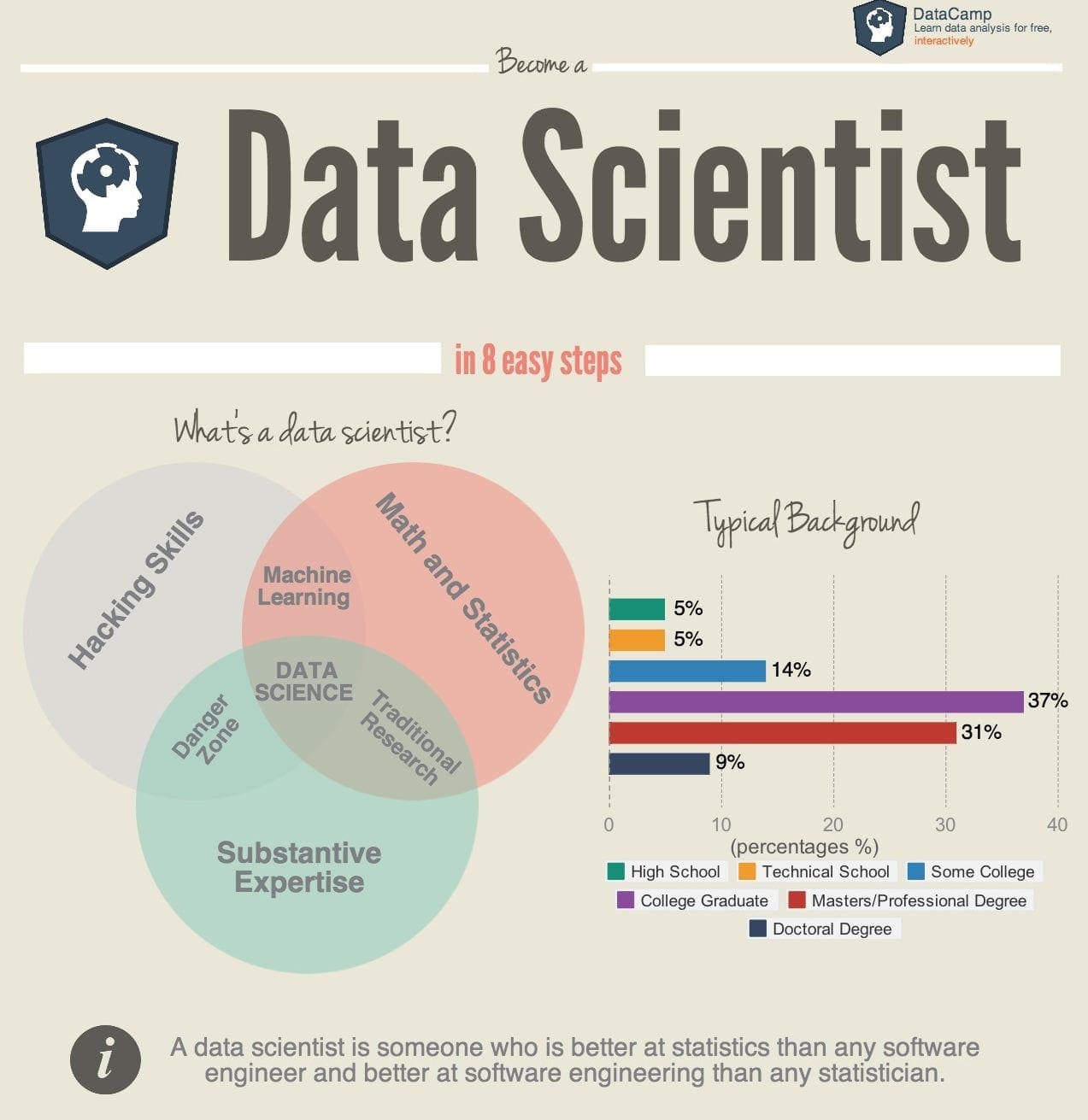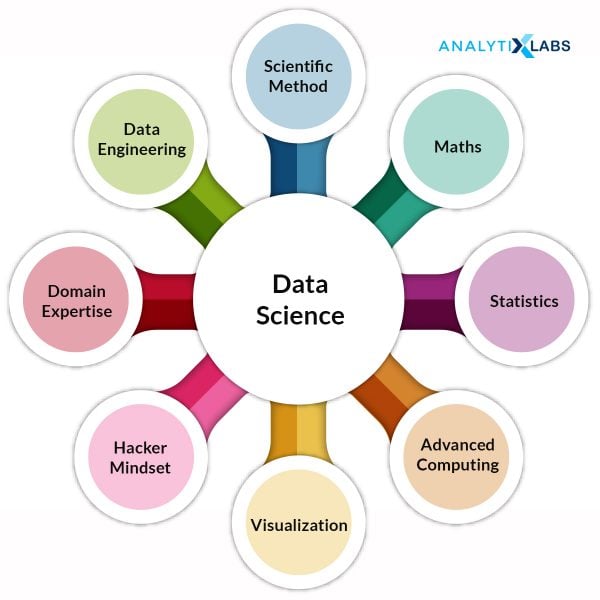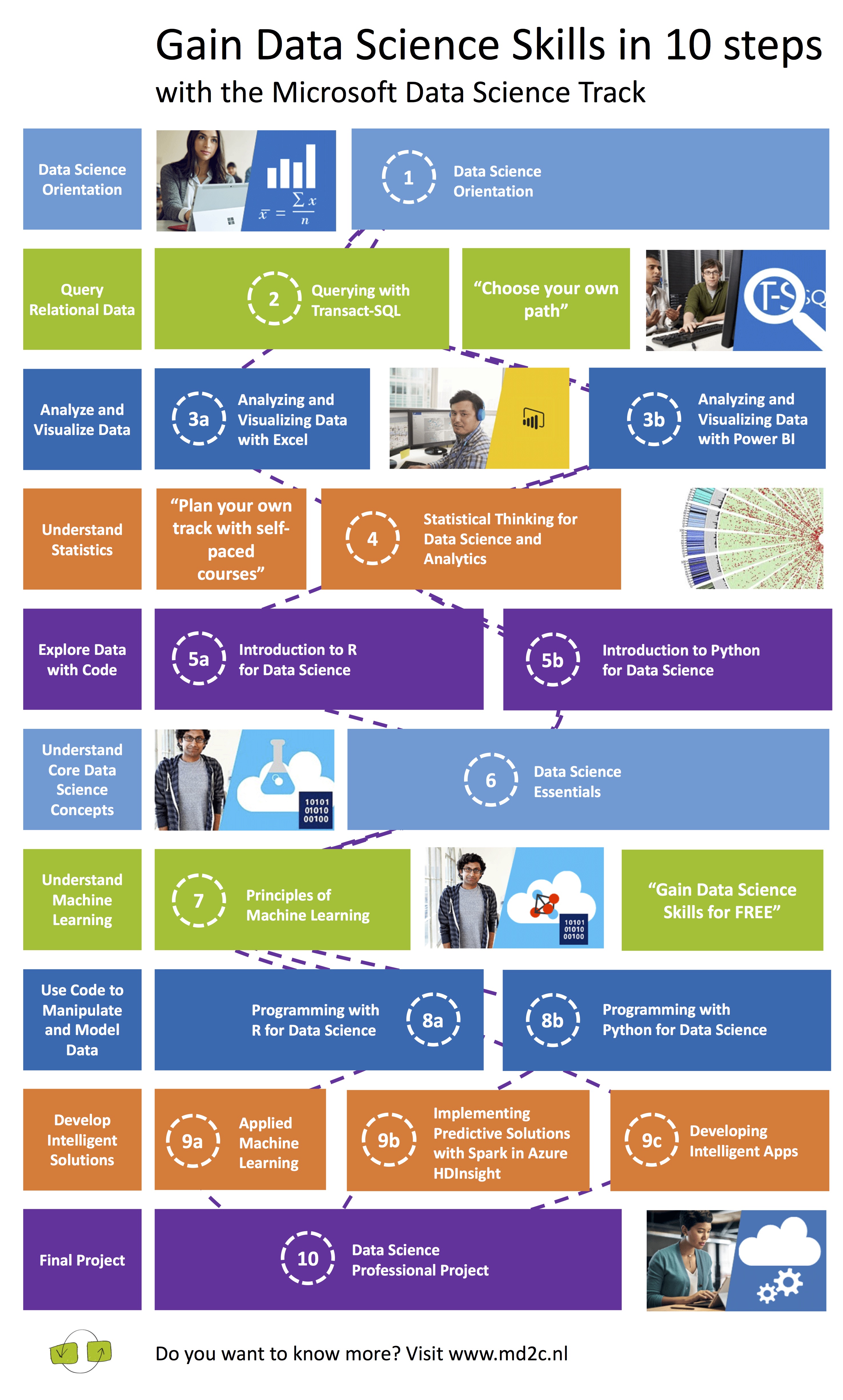Understanding the Role of a Microsoft Data Scientist
A Microsoft Data Scientist plays a critical role in organizations that leverage data to drive decision-making and innovation. These professionals are responsible for analyzing large and complex datasets, building predictive models, and developing machine learning algorithms to uncover insights and trends. The role requires a unique blend of skills, including statistical analysis, programming, data visualization, and domain expertise. Microsoft Data Scientists work with a variety of tools and technologies, such as Azure Machine Learning, Power BI, and SQL Server, to collect, process, and analyze data. They are also responsible for communicating their findings to stakeholders, making recommendations based on their analysis, and implementing data-driven solutions to improve business performance.
Key Skills Required to Excel as a Microsoft Data Scientist
To excel as a Microsoft Data Scientist, one must possess a unique set of skills that enable them to analyze and interpret complex data sets, build predictive models, and communicate insights effectively. The following are some of the essential skills required to become a successful Microsoft Data Scientist:
- Programming: Proficiency in programming languages such as Python, R, and SQL is crucial for data manipulation, cleaning, and analysis. Microsoft Data Scientists should also be familiar with tools such as TensorFlow, PyTorch, and Scikit-learn for machine learning and deep learning.
- Data Visualization: The ability to communicate complex data insights through visualizations is essential for Microsoft Data Scientists. Tools such as Power BI, Tableau, and Matplotlib can help create interactive and informative visualizations that enable stakeholders to make data-driven decisions.
- Domain Expertise: Microsoft Data Scientists should have a deep understanding of the industry or domain they are working in. This expertise enables them to ask the right questions, identify relevant data sources, and interpret results in a meaningful way.
- Statistical Modeling: A strong foundation in statistical modeling is necessary to build predictive models and test hypotheses. Microsoft Data Scientists should be familiar with various statistical techniques, including regression analysis, hypothesis testing, and experimental design.
- Machine Learning: Microsoft Data Scientists should have a solid understanding of machine learning algorithms and techniques, including supervised and unsupervised learning, deep learning, and natural language processing.
By developing these essential skills, Microsoft Data Scientists can position themselves for success in this rapidly evolving field.
Microsoft Data Science Tools and Technologies
Microsoft Data Scientists have access to a wide range of tools and technologies that enable them to collect, process, and analyze data effectively. Here are some of the most popular tools and technologies used by Microsoft Data Scientists:
- Azure Machine Learning: Azure Machine Learning is a cloud-based platform that enables Microsoft Data Scientists to build, train, and deploy machine learning models quickly and easily. The platform provides a range of tools and services, including automated machine learning, MLOps, and drag-and-drop experimentation.
- Power BI: Power BI is a business analytics tool that enables Microsoft Data Scientists to visualize and analyze data in real-time. The platform provides interactive dashboards, reports, and visualizations that help stakeholders make data-driven decisions.
- SQL Server: SQL Server is a relational database management system that enables Microsoft Data Scientists to store, manage, and analyze large and complex datasets. The platform provides a range of tools and services, including SQL Server Machine Learning Services, which enables data scientists to build and deploy machine learning models using R and Python.
- Python and R: Python and R are popular programming languages used by Microsoft Data Scientists for data analysis, machine learning, and statistical modeling. Both languages provide a range of libraries and frameworks, including NumPy, Pandas, Scikit-learn, and TensorFlow, that enable data scientists to perform complex data analysis tasks.
- Visual Studio Code: Visual Studio Code is a popular code editor used by Microsoft Data Scientists for coding and debugging. The platform provides a range of features, including intelligent code completion, debugging, and version control, that enable data scientists to work efficiently and effectively.
By mastering these tools and technologies, Microsoft Data Scientists can position themselves for success in this rapidly evolving field.
How to Prepare for a Career as a Microsoft Data Scientist
Becoming a successful Microsoft Data Scientist requires a combination of education, practical experience, and networking within the industry. Here is a step-by-step guide on how to prepare for a career as a Microsoft Data Scientist:
- Obtain a Relevant Education: A bachelor’s or master’s degree in a relevant field such as computer science, statistics, mathematics, or engineering is essential for a career as a Microsoft Data Scientist. Look for programs that offer courses in data analysis, machine learning, and statistical modeling.
- Gain Practical Experience: Participate in internships, hackathons, or research projects to gain practical experience in data science. Look for opportunities to work with real-world datasets and use tools and technologies such as Azure Machine Learning, Power BI, and SQL Server.
- Build a Strong Portfolio: Create a portfolio of your work to showcase your skills and expertise to potential employers. Include projects that demonstrate your ability to analyze data, build predictive models, and communicate insights effectively.
- Network Within the Industry: Attend industry conferences, meetups, and events to connect with other data scientists and industry professionals. Join online communities such as Microsoft Data Science User Group or Kaggle to learn from others and showcase your work.
- Stay Updated: Stay updated on the latest trends, tools, and techniques in data science by reading industry publications, attending webinars, and participating in online courses. Follow thought leaders and industry experts on social media to stay informed about the latest developments in the field.
By following these steps, you can position yourself for a successful career as a Microsoft Data Scientist.
Real-World Applications of Microsoft Data Science
Microsoft Data Scientists apply their skills and expertise to solve complex problems across various industries, including healthcare, finance, retail, and manufacturing. Here are some real-world examples of how Microsoft Data Scientists make a difference:
- Predicting Customer Churn: Microsoft Data Scientists use machine learning algorithms to analyze customer behavior and predict which customers are at risk of churning. By identifying at-risk customers, businesses can take proactive measures to retain them, such as offering personalized promotions or improving customer service.
- Optimizing Supply Chain Management: Microsoft Data Scientists use data analysis and machine learning to optimize supply chain management, reducing costs and improving efficiency. By analyzing data on inventory levels, shipping routes, and production schedules, data scientists can identify bottlenecks and inefficiencies and recommend solutions to address them.
- Detecting Fraud: Microsoft Data Scientists use machine learning algorithms to detect fraud in real-time, helping businesses protect themselves from financial losses. By analyzing patterns and anomalies in transaction data, data scientists can identify fraudulent activity and alert businesses to take action.
- Improving Healthcare Outcomes: Microsoft Data Scientists use data analysis and machine learning to improve healthcare outcomes, such as predicting patient risk and personalizing treatment plans. By analyzing patient data, data scientists can identify high-risk patients and recommend interventions to improve their health outcomes.
- Enhancing Customer Experience: Microsoft Data Scientists use data analysis and machine learning to enhance the customer experience, such as personalizing recommendations and improving customer service. By analyzing customer data, data scientists can identify customer preferences and recommend products or services that meet their needs.
These are just a few examples of how Microsoft Data Scientists apply their skills to solve complex problems and make a difference in the world.
How to Stay Updated in the Evolving Field of Microsoft Data Science
The field of data science is constantly evolving, with new tools, techniques, and trends emerging regularly. To stay competitive as a Microsoft Data Scientist, it’s essential to stay updated on the latest developments in the field. Here are some tips on how to stay informed:
- Follow Industry Publications: Stay updated on the latest news and trends in data science by following industry publications such as Microsoft Data Science Blog, KDnuggets, and Data Science Central.
- Attend Conferences and Webinars: Attend conferences and webinars to learn about the latest trends and best practices in data science. Look for events hosted by Microsoft, such as the href=”https://www.microsoft.com/en-us/ignite” target=”_blank” rel=”noopener noreferrer”>Microsoft Ignite Conference or the Microsoft AI Events.
- Participate in Online Courses and Certifications: Participate in online courses and certifications to learn new skills and techniques in data science. Look for courses offered by Microsoft, such as the Microsoft Learn Platform or the Microsoft Data Science Professional Certificate on edX.
- Join Online Communities: Join online communities such as the Microsoft Tech Community or the Microsoft Research Academic Program to connect with other data scientists and industry professionals. Participate in discussions, ask questions, and share your knowledge and expertise.
- Experiment with New Tools and Technologies: Stay up-to-date with the latest tools and technologies in data science by experimenting with new tools and techniques. Try out new tools such as Azure Machine Learning, Power BI, or SQL Server, and see how they can improve your workflow and productivity.
By following these tips, you can stay informed about the latest trends, tools, and techniques in the field of Microsoft Data Science and position yourself for success in your career.
Career Opportunities and Advancement for Microsoft Data Scientists
Microsoft Data Scientists have a wide range of career opportunities and advancement paths available to them. Here are some of the most common career paths for Microsoft Data Scientists:
Research
Microsoft Data Scientists can work in research roles, developing new algorithms, models, and techniques to advance the field of data science. Research roles may be available in academia, government, or industry, and may involve collaborating with other researchers, publishing papers, and presenting findings at conferences.
Consulting
Microsoft Data Scientists can also work in consulting roles, helping businesses and organizations solve complex problems using data science. Consulting roles may involve working on short-term projects, developing custom solutions, and providing training and support to clients.
Management
Microsoft Data Scientists with strong leadership skills can move into management roles, overseeing teams of data scientists and managing data science projects. Management roles may involve setting project goals, allocating resources, and communicating with stakeholders.
Entrepreneurship
Microsoft Data Scientists with an entrepreneurial spirit can start their own businesses, developing and selling data science products and services. Entrepreneurial roles may involve developing new algorithms, building software tools, and marketing products to potential customers.
Advancement
Microsoft Data Scientists can also advance their careers by pursuing higher levels of education, such as a master’s or doctoral degree in data science or a related field. Advanced degrees can provide opportunities for specialization, research, and leadership, and can lead to higher-paying roles and greater responsibility.
To advance in their careers, Microsoft Data Scientists should focus on building a strong foundation of skills, gaining practical experience, and staying up-to-date on the latest trends and techniques in data science. By doing so, they can position themselves for success and take advantage of the many career opportunities available to them in this rapidly growing field.
Overcoming Challenges in the Microsoft Data Science Field
Microsoft Data Scientists face a variety of challenges in their work, from dealing with large and complex datasets to addressing ethical concerns and communicating findings effectively. Here are some strategies for overcoming these obstacles:
Dealing with Large and Complex Datasets
Microsoft Data Scientists often work with large and complex datasets, which can be difficult to manage and analyze. To overcome this challenge, data scientists can use tools such as Azure Machine Learning, which provides a scalable platform for data processing and machine learning. Data scientists can also use techniques such as data sampling, data partitioning, and data compression to manage large datasets more effectively.
Addressing Ethical Concerns
Microsoft Data Scientists must also be aware of ethical concerns related to data privacy, bias, and fairness. To address these concerns, data scientists can use techniques such as differential privacy, which adds noise to data to protect individual privacy. Data scientists can also use techniques such as fairness metrics and bias mitigation algorithms to ensure that their models are fair and unbiased.
Communicating Findings Effectively
Microsoft Data Scientists must also be able to communicate their findings effectively to stakeholders, who may not have a technical background. To do this, data scientists can use data visualization tools such as Power BI, which provides interactive and customizable visualizations. Data scientists can also use storytelling techniques and plain language to communicate complex concepts to non-technical audiences.
Staying Up-to-Date with the Latest Tools and Techniques
Microsoft Data Scientists must also stay up-to-date with the latest tools and techniques in data science, which can be challenging given the rapid pace of innovation in the field. To stay current, data scientists can participate in online courses and certifications, attend conferences and webinars, and join online communities such as the Microsoft Tech Community.
Collaborating with Other Data Scientists
Finally, Microsoft Data Scientists can overcome challenges by collaborating with other data scientists, either within their organization or in the broader data science community. By working together, data scientists can share knowledge, expertise, and best practices, and can help each other overcome obstacles and achieve their goals.
By employing these strategies, Microsoft Data Scientists can overcome common challenges in the field and achieve success in their careers.






